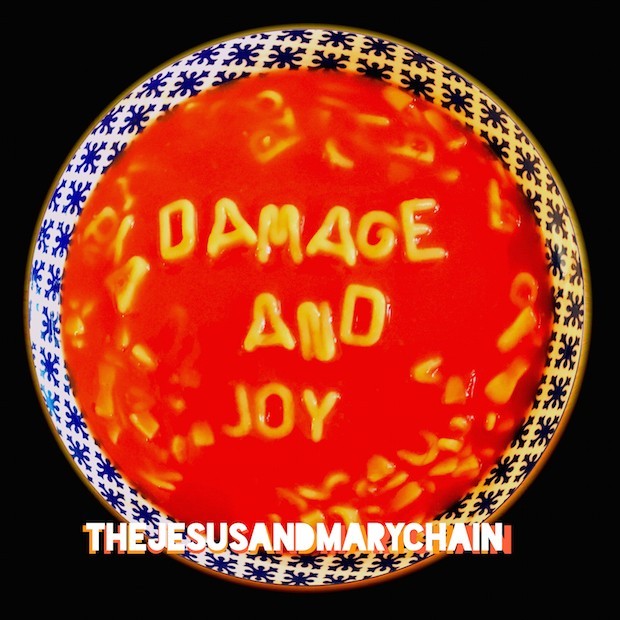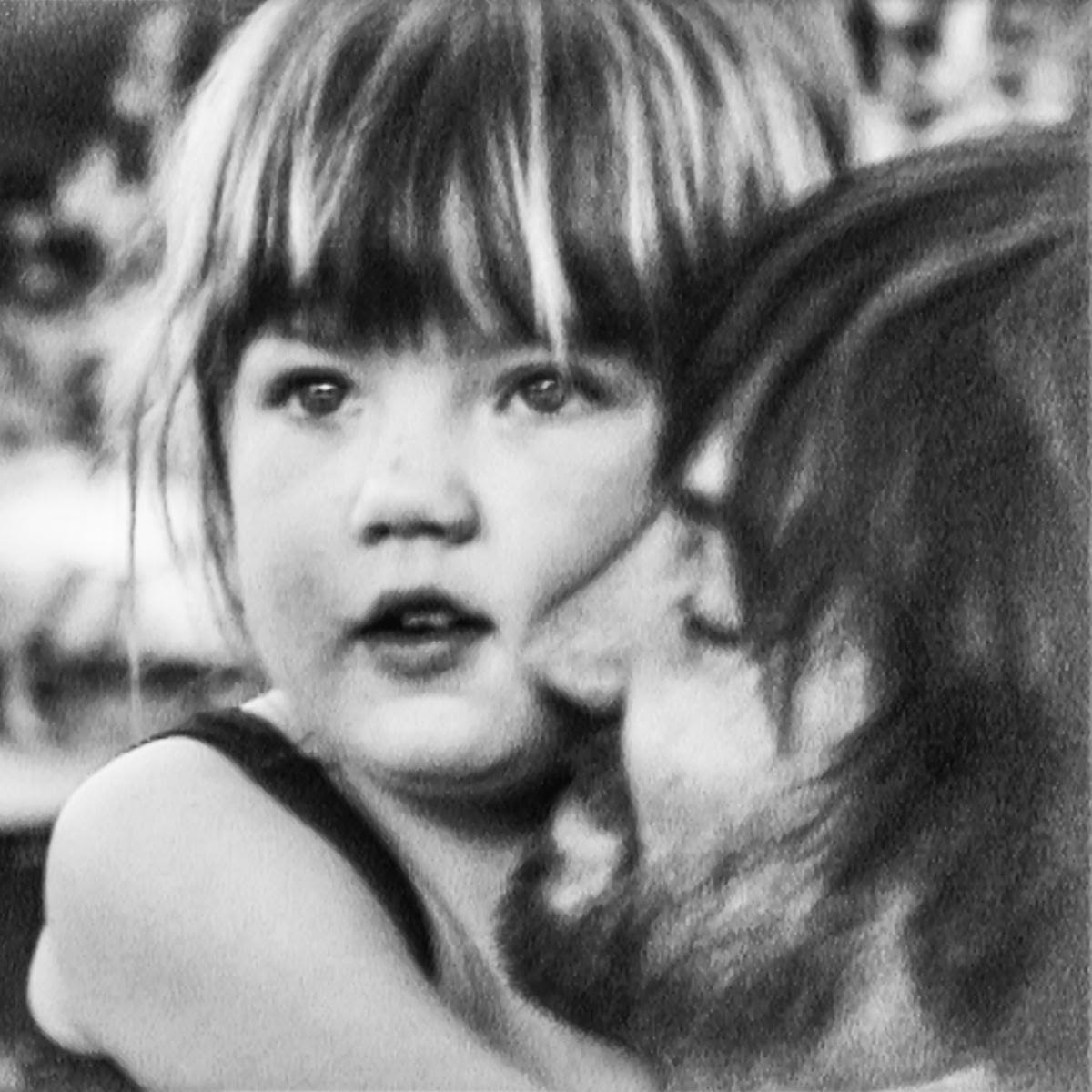This year, Psychocandy, the Jesus And Mary Chain's first album, turns 32. As it happens, that's the same age, more or less, that rock 'n' roll itself was when Psychocandy came out. It wasn't a young genre or anything, but in 1985, there were still things you could do with rock 'n' roll that nobody else had yet attempted. And the Jesus And Mary Chain found one of those things, combining sounds that had never been combined before. The Scottish insurgents took the nihilistic cooler-than-thou junkie-blues skree of the Velvet Underground and the starry-eyed melodic sweetness of the girl-group era, and they combined those disparate elements into one thing. They made lovely, shimmering pop songs, and then they drowned those pop songs in howling feedback, sounding as studiously bored as they possibly could the entire time.
Over the next five albums, the Mary Chain would make slight adjustments to the fundamental equation at the center of that sound. They'd combine those foundational elements in more and more intuitive ways, writing even better songs in the process, and they'd make a bit of room for new influences, as when they temporarily replaced their endless succession of flesh-and-blood drummers with a drum machine. But their sound, as ferociously cool and secretly beautiful as it was, remained essentially unchanged. They kept exploring the same territory, finding slightly new things they could do with it, and it served them well, until they finally got sick enough of each other to break up in 1999. And now that they're back, with their first new album in 19 years, they're still exploring that same territory. And it's still serving them well.
Things have changed for the Mary Chain since we last heard from them. For a while there, it was like the world forgot how to hear them. In their infancy, the Mary Chain were the NME-anointed coolest band in the universe. By 1992, when they played the Lollapalooza main stage in between Pearl Jam and Soundgarden, they were curious anomalies in a music landscape that had moved onto other ideas about what cool was. By the time I saw them on their Munki tour in 1998, playing for what I remember as a half-full 9:30 Club and still sounding like gods, they'd been essentially forgotten. Shortly after they broke up, things changed. By the early '00s, it was pretty clear that people were coming back around to the Mary Chain's form of cool. It's probably fair to say that the Strokes learned some of their sleepy lean from the band, and then there were things like the tunnel scene from Lost In Translation, with "Just Like Honey" serenely blaring on the soundtrack. In the years that the Mary Chain were away, a band like the Black Rebel Motorcycle Club, who were basically a Mary Chain tribute act, had time to squeeze in an entire half-decent career arc.
The Mary Chain have been back together, touring and playing festivals, for a solid decade, and they are only now getting their shit together to release an album. This should be a bad sign. Half of the album's 14 songs are re-recorded versions of older songs, mostly songs that one or the other Reid brother recorded during the band's absence. This should be another bad sign. And yet this band seems incapable of writing a bad song. Damage And Joy is a long way away from being the band's best album, and it continues on the slightly-diminished-returns trajectory that Munki did. But Munki was still a good fucking album, and so is this.
Given all the imitators who have come along in the past decades, it's amazing that nobody else has managed to get the band's sound right. The balance of sigh-worthy beauty and dope-fiend ferocity is a delicate one. Jim Reid is an absolutely distinctive singer -- an ennui-driven Scottish tweaker trying to sound like a drawling American cowboy -- and his exquisitely bored growl-burr just isn't the kind of thing you can copy. (Honestly, the singer who's come the closest in recent years is probably Sky Ferreira, who shows up here to duet with Reid on "Black And Blues," making it seem weirdly like Reid is singing with a female version of himself.) And while the Mary Chain were never exactly masters of syncopation, their songs were always good for, at the very least, a little tambourine shimmy. In today's deathly-plod rock landscape, that's enough to make the 2017 version of the Mary Chain sound like motherfucking Tito Puente.
Jim Reid has spoken, in interviews, about how he really doesn't listen to new music, and you can tell. Other than the band's choice of duet partners (Ferreira, Isobel Campbell), there is absolutely no trace of new influence on Damage And Joy. Instead, there are spangled guitars and shakers and lyrics that hold fast to a deeply anachronistic school of rock songwriting. On "Simian Split," William Reid breathes, "I killed Kurt Cobain / I put the shot right through his brain / And his wife gave me the job / Cuz I’m a big fat lying slob." The band insists that he's joking, and they're right; it's just that songwriters aren't cracking jokes like that anymore. They're also not delivering lines like the ones here -- "I got a heart full of evil and a soul full of rock 'n' roll" -- with a straight face. These things just aren't done anymore, and maybe that's why it's so refreshing to hear these old masters still back in that zone.
But the real reason to give Damage And Joy a shot is the band's undiminished sense of beauty. Once upon a time, the Mary Chain were just as good at rave-ups like "Far Gone And Out" as they were at swooning ballads like "Almost Gold." The rave-ups are still fun, but the ballads are just completely lapping them this time around. "Always Sad" is top-shelf twangy post-breakup-regret slither. "Song For A Secret" has Jim Reid and Isobel Campbell's breathy sighs just melting into one another while William's guitars sparkle and fade. "Black And Blues," with Ferreira, is dejected roadhouse bluster, and it's marvelous. The best songs here are just killer, and the worst ones are still perfectly acceptable. In fact, if the Mary Chain have written a song, in the decades since Psychocandy, that's anything less than perfectly acceptable, I haven't heard it.
If you've never dug deep into the Mary Chain, Damage And Joy is not the place you should start. (Psychocandy is the most-canonized one, but I'd say start with Automatic, probably just because that's where I started and it worked for me.) Still, it's one hell of a testament to a band who will never abandon its aesthetic -- an aesthetic that they invented, and one that nobody has ever done better.
Damage And Joy is out 3/24 on ADA/Warner Music.
[videoembed size="full_width" alignment="center"][/videoembed]
[videoembed size="full_width" alignment="center"][/videoembed]






